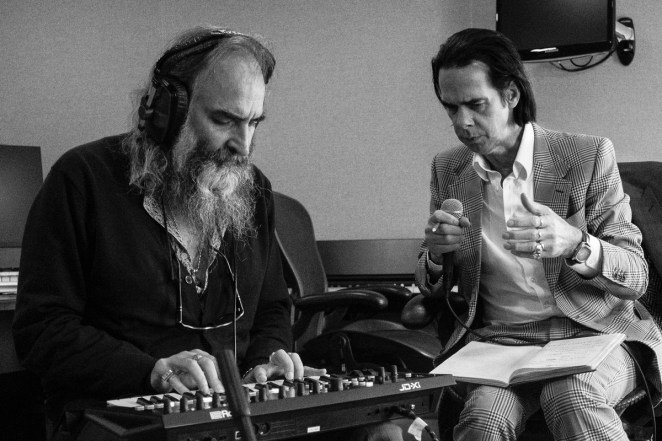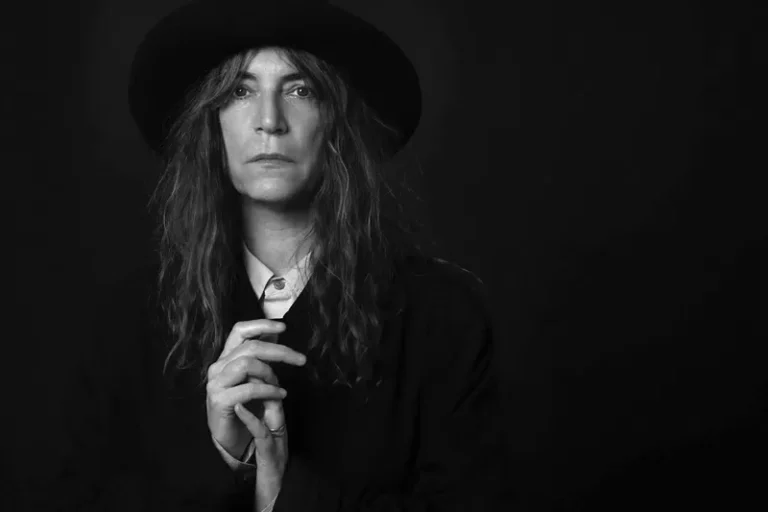
3 Hidden Gems: Songs You Didn’t Know Nick Cave Wrote for Other Artists
Nick Cave, renowned for his haunting lyrics and emotive compositions, is a name synonymous with some of the most captivating music in modern rock and post-punk. Known for his dark, poetic narratives, often imbued with raw emotion and intensity, Cave’s work spans not just his own records with The Bad Seeds, but also collaborations with a range of artists across genres. While many are familiar with his own catalog, what often goes unnoticed are the tracks he’s penned for other musicians. Some of these songs are buried treasures, reflecting Cave’s songwriting genius in ways that are perhaps less obvious than his own releases.
Here are three hidden gems—songs you probably didn’t know Nick Cave wrote for other artists—that showcase his ability to craft unforgettable music that transcends his own discography.
1. “Ship Song” (Performed by Marianne Faithfull)
Though many fans know “Ship Song” as a beloved track from The Good Son (1990), few are aware that the song was initially written with Marianne Faithfull in mind. The track was originally intended for Faithfull’s 1995 album Vagabond Ways. However, by the time Faithfull entered the studio to record the song, she and Cave had grown close, and he decided to keep the song for his own band. The decision to give Faithfull the song was indicative of Cave’s respect for her as an artist, and it speaks to the deep, intertwined connection between their respective musical worlds.
Faithfull, whose career had weathered highs and lows, embraced “Ship Song” with the raw, soulful delivery it demanded. Cave himself describes it as a song that allowed Faithfull to sing about her own sense of loss, while simultaneously being a powerful addition to her catalog. The melancholic nature of the track is enhanced by Faithfull’s delivery, adding layers of poignancy that might have been hard to capture on Cave’s own recording.
Faithfull’s version of the song offers a more fragile, introspective take on the original, which Cave himself describes as a “song of surrender.” There’s something deeply moving about hearing Faithfull’s voice take the song into new emotional territory, drawing out an intimacy that resonates with listeners in an entirely different way from Cave’s own vocal delivery.
2. “Red Right Hand” (Performed by Arctic Monkeys)
“Red Right Hand” is perhaps one of Nick Cave’s most iconic tracks, a brooding, atmospheric piece originally released on Let Love In in 1994. Its eerie, haunting lyrics, paired with its cinematic atmosphere, have made it a staple of Cave’s live performances. However, many may not realize that Cave’s influence on the song extends beyond his own band. Over the years, “Red Right Hand” has been covered by several artists, including the popular British band Arctic Monkeys.
The Arctic Monkeys’ version of the track, released as part of their Tranquility Base Hotel & Casino sessions in 2018, pays homage to Cave’s original composition while giving it a modern, edgy twist. Arctic Monkeys’ lead singer, Alex Turner, took the track into a new, retro-futuristic direction, using its ominous tone as a springboard to explore new sonic territories. The stark, minimalist arrangement in Arctic Monkeys’ version brings the song into a more contemporary realm, offering a fresh interpretation of the original’s mythic, almost apocalyptic lyrics.
Though it’s a cover, the Arctic Monkeys’ rendition is a powerful example of how Cave’s songwriting can resonate across genres and generations. The song’s mysterious and haunting quality, coupled with its timeless lyricism, makes it a perfect vehicle for reinterpretation. While Cave’s original offers a dark, almost biblical narrative of power and malevolence, the Arctic Monkeys’ version retains much of that mystery while delivering it through a more stripped-back, modern lens.
3. “And No More Shall We Part” (Performed by Kylie Minogue)
While it might seem unusual to associate the tender ballads of Kylie Minogue with the dark and intense world of Nick Cave, the two artists have collaborated in some surprising ways. Their most notable collaboration comes in the form of “And No More Shall We Part,” a track from Cave’s No More Shall We Part (2001) album. The track was originally penned by Cave for Minogue’s album Impossible Princess (1997), but she decided to pass on the song. Cave later revisited it and included it in his own work, where it found its place as one of the most emotionally resonant songs in his catalog.
Kylie Minogue, having sung “Where the Wild Roses Grow” with Cave in the past, was a perfect fit for Cave’s brand of melancholy balladry, though at the time it was her own pop career that defined her image. In “And No More Shall We Part,” Cave’s lyrics about love and finality strike a deeply personal and intimate chord with Minogue’s voice, offering a stark contrast to the more upbeat tracks that defined her pop legacy.
Though Minogue’s version of the song never materialized, the tale of their collaboration is a testament to Cave’s versatility as a songwriter. His ability to create songs that can be shaped by an artist’s unique vocal delivery is something that is often underappreciated, especially when considering the variety of acts he’s written for. Minogue’s ability to express the vulnerability of the song—an exploration of love and separation—further solidifies Cave’s talent for writing across different styles and genres.
Conclusion: The Art of Collaboration
While Nick Cave is best known for his dark, brooding sound and his distinct voice, his ability to craft songs for other artists speaks to his expansive talent as a songwriter. These hidden gems—songs like “Ship Song” for Marianne Faithfull, “Red Right Hand” for Arctic Monkeys, and “And No More Shall We Part” for Kylie Minogue—reveal a different side of Cave’s artistic process, one that transcends the boundaries of his own work and influences musicians across a wide range of genres.
The beauty of these songs lies not only in the emotional depth of the lyrics but also in how they’ve been adapted and brought to life by different voices. Cave’s gift lies in his ability to capture universal emotions—love, loss, longing—and present them in ways that are deeply personal yet resonate with a broad audience. These tracks are just a small sampling of the many collaborations that showcase Cave’s range as a writer, proving that his artistry extends far beyond his own records.
Through these collaborations, Cave demonstrates that great songwriting is not just about creating songs for oneself, but about understanding the unique voices of others and writing something that allows them to shine. Nick Cave’s ability to write for other artists has yielded some of his most haunting and unforgettable tracks—hidden gems that continue to endure as powerful examples of his unparalleled songwriting talent.



